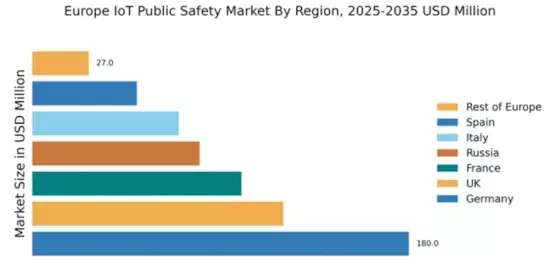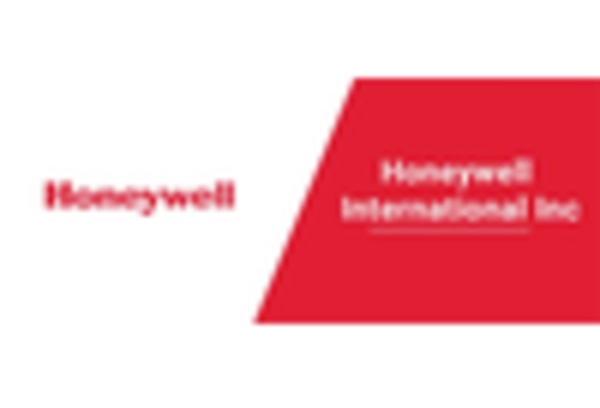Rising Cybersecurity Concerns
As the adoption of IoT devices in public safety increases, so do concerns regarding cybersecurity. The iot public-safety market must address these vulnerabilities to ensure the integrity and reliability of safety systems. High-profile cyberattacks on critical infrastructure have underscored the need for robust security measures. In response, many European countries are implementing stricter regulations and standards for IoT devices used in public safety applications. This trend is likely to drive innovation in cybersecurity solutions tailored for IoT, creating a dual focus on safety and security. The market for cybersecurity solutions in the IoT sector is expected to grow by 20% annually, reflecting the urgent need for protective measures.
Government Initiatives and Funding
European governments are increasingly recognizing the importance of public safety and are allocating substantial funds to enhance security infrastructure. Initiatives such as the European Union's Horizon 2020 program aim to foster innovation in public safety technologies, including IoT applications. The iot public-safety market stands to benefit from these investments, as they often lead to pilot projects and large-scale implementations of IoT systems. In 2025, it is estimated that public safety budgets across Europe will increase by approximately 15%, further driving the adoption of IoT technologies in this sector. This financial support is crucial for developing and deploying advanced solutions that can address the evolving safety challenges faced by urban populations.
Technological Advancements in IoT Devices
The continuous evolution of IoT technology is a key driver for the public safety market in Europe. Innovations such as improved sensor technology, enhanced connectivity options, and advanced data analytics capabilities are enabling more effective public safety solutions. The iot public-safety market is witnessing the introduction of smart devices that can communicate seamlessly, providing real-time data to law enforcement and emergency services. For example, the integration of 5G technology is expected to enhance the performance of IoT devices, allowing for faster data transmission and more reliable connections. This technological progress is likely to lead to a market growth rate of 18% over the next five years, as organizations seek to leverage these advancements for improved safety outcomes.
Growing Urbanization and Public Safety Needs
The rapid urbanization across Europe has led to increased population density in cities, which in turn raises the demand for enhanced public safety measures. As urban areas expand, the need for effective surveillance, emergency response, and crime prevention becomes paramount. The iot public-safety market is responding to this challenge by integrating advanced IoT solutions that facilitate real-time monitoring and data collection. For instance, cities are deploying smart cameras and sensors that can detect unusual activities, thereby improving response times. According to recent estimates, the urban population in Europe is projected to reach 80% by 2050, indicating a substantial market opportunity for IoT solutions aimed at public safety.
Public Awareness and Demand for Safety Solutions
There is a growing public awareness regarding safety issues in urban environments, which is driving demand for innovative solutions. Citizens are increasingly advocating for enhanced safety measures, prompting local governments to explore IoT technologies that can provide better surveillance and emergency response capabilities. The iot public-safety market is responding to this demand by developing user-friendly applications that allow citizens to report incidents and access safety information in real-time. Surveys indicate that over 70% of European citizens express a desire for more integrated safety solutions in their communities. This heightened awareness and demand are likely to propel the market forward, as stakeholders recognize the value of investing in IoT technologies to enhance public safety.


















Leave a Comment